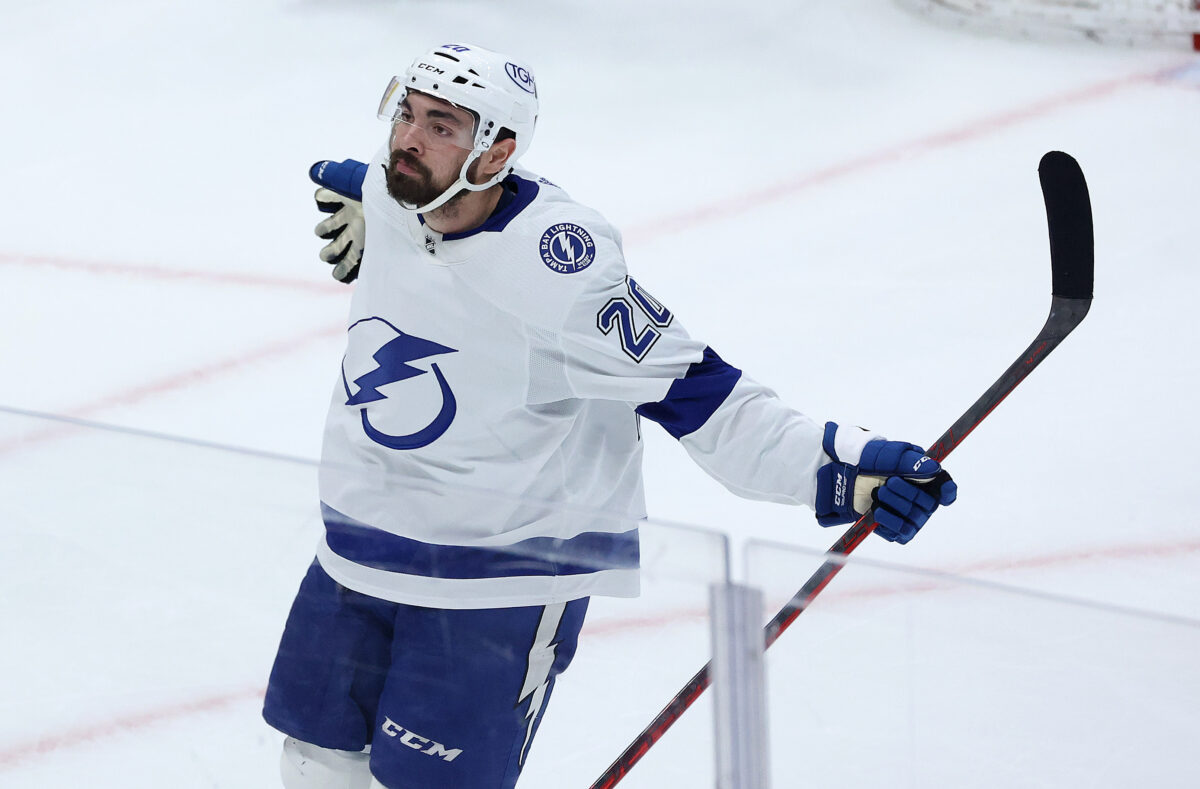It goes without saying that since joining the team, Michael Bunting has developed into a crucial piece of the Toronto Maple Leafs. But unless the Maple Leafs can reach a deal before the July 1, 2023 deadline, he is expected to become an unrestricted free agent (UFA) at the end of the current season. Several previous Maple Leafs with a similar playing approach to Bunting’s have gone on to sign larger contracts with other organizations. For this post, we will consider Zach Hyman and Mason Marchment as comparables for Bunting on the open market because they have inked contracts in the last two seasons and will enjoy financial relief for the rest of their careers.
Bunting’s Value on the Open Market
Bunting has proven himself as a dependable player who can line up with the best players on the team. He has spent most of his tenure with the Maple Leafs playing on a line with either Mitch Marner or William Nylander, centered by Auston Matthews. He has demonstrated that he can complement the lines the coach placed him on. While his time with the team has been short, over these last two seasons, he has been the perfect replacement for Hyman after he left to sign with the Edmonton Oilers.

Typically, to find success in contract negotiation in the NHL, it is essential to compare players and contracts based on the length, cost, and point output of the players being used as benchmarks. Let’s examine a few players, all of whom were previous Maple Leafs, who had contracts that were about equivalent to the price Bunting could command on the open market.
Related: Maple Leafs Play Classic Christmas Characters
Former Maple Leafs Hyman and Mason Marchment, who played similarly to Bunting, both went on to land “big tickets” on the free market. The three players all suit the second-tier standard of players on their respective clubs, yet there are some aspects of their games that do differ. If Bunting can keep up his current pace, he could find himself in and around that range of both Hyman and Marchment.
Hyman presently has 24 points in 34 games with the Oilers and had 58 points during the previous campaign. His point totals were never as high as Bunting’s were when he signed his seven-year, $38.5 million contract with the Oilers on July 28, 2021, despite having a shorter season. Marchment signed his deal with the Dallas Stars this past offseason on July 13, 2022; he was able to fetch an $18 million contract over four years. His point production was also lower than Bunting’s, scoring just 47 points last season with the Florida Panthers, which was his career high, though that came in just 54 games.
Bunting had a scorching start to his time with the Maple Leafs in 2021-22, and so far this season, he appears to be maintaining that trend. He is now on pace to finish the 82-game season with 57 points, falling just short of his previous high (63 points). He should be able to command roughly $5 million each season on the free market based on his point production compared to both Hyman and Marchment.
Bunting’s Value on the Maple Leafs
It has been made known all over the team’s social media accounts that when Bunting signed with Toronto on July 28, 2021, he wanted to come home and play for his childhood team. Now, with his contract ending, there could be a chance that he takes that same style of “hometown discount” and stay with the Leafs for years to come. With that said, we will take a look at other current and former Maple Leafs that have signed deals in the $3.0 -$4.5 million range and compare them to Bunting.
The contracts of current Leaf Alex Kerfoot and former Leaf Trevor Moore are within the price range at which the team may sign Michael Bunting. Since the organization was his favourite growing up, and he has rekindled his career since joining the Maple Leafs, he may think about accepting a pay cut to remain with them.
However, in the past, players have returned here to revitalize their careers and have since signed new deals with other teams. Ondrej Kase signed with the Carolina Hurricanes this past offseason after playing for Toronto in 2021-22. One of the most noteworthy recent examples is Jack Campbell. He was traded to the Maple Leafs on Feb. 5, 2020, and went on to become a fan favourite before signing a five-year deal with the Oilers this past offseason.
Related: Doable Deadline Deal Could Spark Set of Moves for Maple Leafs
Bunting seems to be genuinely loving his time with the Maple Leafs and would probably want to re-sign when the chance presents itself, despite the fact that players have used Toronto as a place to revitalize their careers in the past during the Kyle Dubas era. The price for him may fall somewhere between Moore’s $4.2 million cap hit for five years and the previously stated Kerfoot agreement, which is worth $3.5 million annually for four years. If the Maple Leafs are successful in signing him, they will be able to use their saved cap space (depending on what the salary cap is at) on other parts of the club while keeping Bunting committed for the foreseeable future.
Unique Contract Structure for Bunting
Since joining the squad, Bunting has blended in well with the core four of Matthews, Marner, Nylander, and John Tavares. However, his bond with Matthews is the one that jumps out the most. And making sure Bunting has a long-term contract with the organization could be part of the Maple Leafs’ efforts to try and re-sign Matthews, whose contract expires in 2024.
Unfortunately, the Maple Leafs don’t have the cap room to sign Bunting while attempting to keep the core group of forwards together for a “big ticket” price. That might compel the team to think of more unique strategies to re-sign him. Two NHL players have already done this, which can serve as a model for both parties in the discussion.
You may also like:
- Maple Leafs Won’t Go Far with Samsonov in Net
- Maple Leafs News & Rumors: Marchand, Domi, Samsonov & Nylander
- Maple Leafs in 2-1 Hole to Bruins After Game 3 Loss
- Maple Leafs Test William Nylander for Concussion Concern
- Prime Video to Carry National Monday Night Games in Canada
Those two players who come to mind are Colton Sissons of the Nashville Predators and Nick Paul of the Tampa Bay Lightning. They both agreed to long-term contracts with reduced average annual values (AAVs), allowing their respective teams to pay them long-term while still keeping them within the salary cap. Paul’s seven-year agreement, which had a $3.15 million average annual value (AAV), gave him the money he wanted and a long-term commitment, but it also helped the Lightning secure longer contracts for players like Braydon Point and Anthony Cirelli. The same is true with Sissons, whose seven-year contract with a $2.85 million AAV enabled Nashville to sign higher-profile free agents like Nino Niederreiter this past offseason and Matt Duchene in 2019.

Although the Maple Leafs most likely won’t be signing any high-profile free agents in the coming seasons, they do have to find space to attempt to re-sign both Matthews and Nylander, the latter of whose contract expires in 2024 as well. The aforementioned Matthews is the main player to re-sign. And as previously stated, he and Bunting’s friendship appears to be strong, so if Matthews wants Bunting on the team long-term for him to return, a contract similar to Paul’s might be the most viable option.
Bunting’s return to the Maple Leafs should be a priority, regardless of how the contract structure. He has not only contributed to the team’s success at a high rate, but he is also a high-energy player who motivates teammates. The fact that he isn’t scared to enter scrums and defend his teammates gives him a different look while playing on a line with Matthews, making him an important of the roster moving forward.
